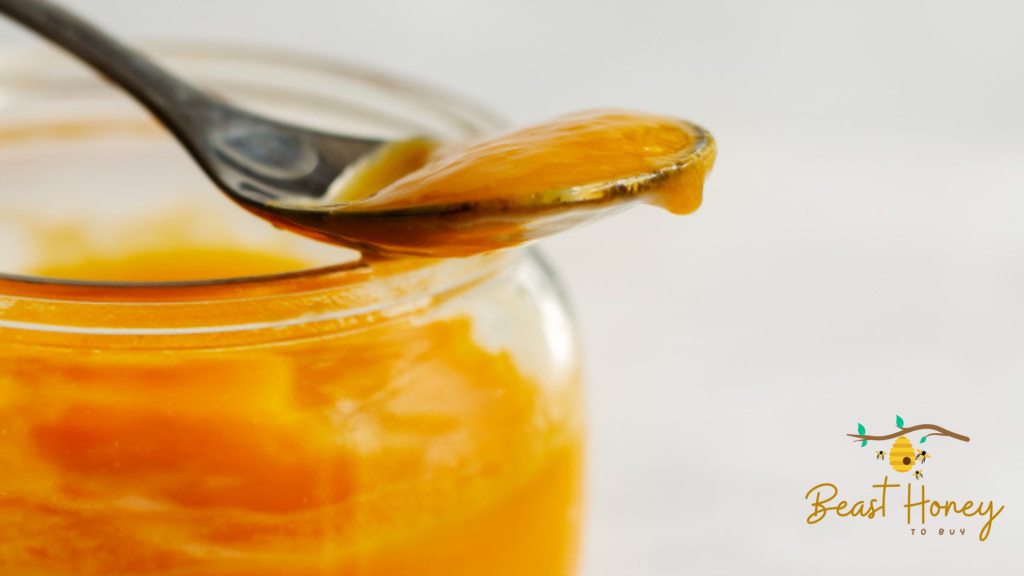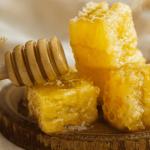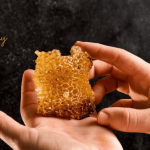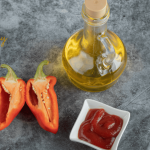Honey is nature’s sweetest gift. It comes in different forms, each with its own charm. Two popular types are creamed honey and liquid honey.
But what sets them apart? In this 2025 guide, I’ll break down the differences in texture, taste, and uses.
Whether you’re a honey lover or just curious, this post will help you choose the right honey for your needs. Let’s dive in!
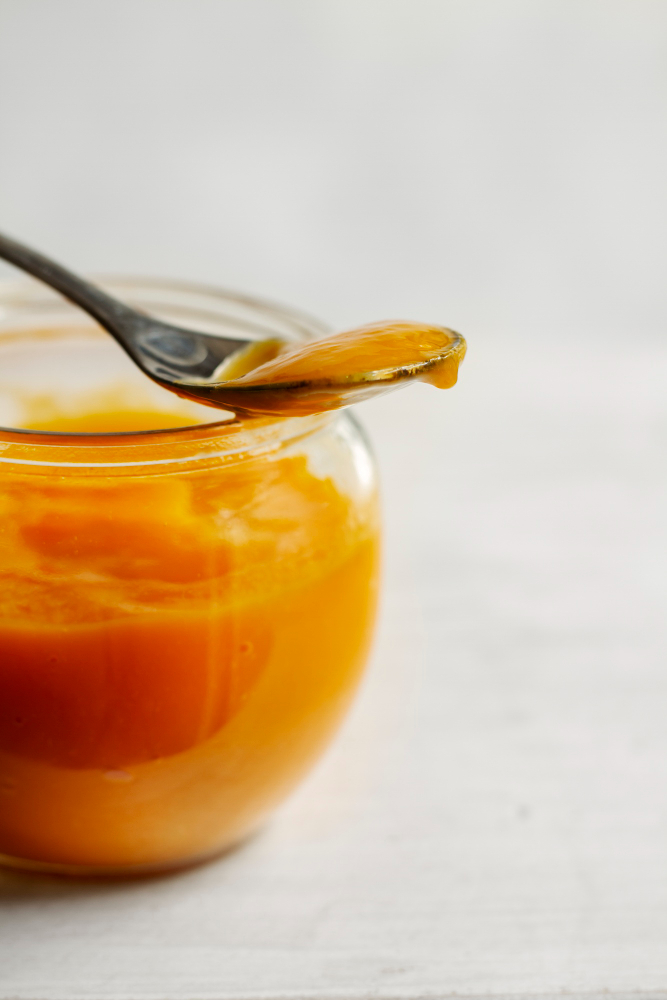
What Is Creamed Honey?
Creamed honey, also called whipped or spun honey, is smooth and spreadable. It’s made by controlling the natural crystallization process of honey.
Beekeepers mix liquid honey with a small amount of already-creamy honey. They stir it slowly at a cool temperature. This creates tiny, fine crystals, giving creamed honey its thick, velvety texture.
Unlike liquid honey, creamed honey doesn’t drip or harden into gritty crystals. It stays creamy for years if stored properly. It’s perfect for spreading without making a mess.
What Is Liquid Honey?
Liquid honey is the classic form most people know. It’s raw or lightly filtered honey straight from the hive. It’s runny, clear, or slightly cloudy, depending on how it’s processed. Raw liquid honey keeps its natural pollen, enzymes, and nutrients.
Over time, liquid honey may crystallize, forming coarse crystals. This is normal and doesn’t mean it’s spoiled. You can liquify it by gently warming it in a water bath. Liquid honey is versatile and great for pouring or drizzling.
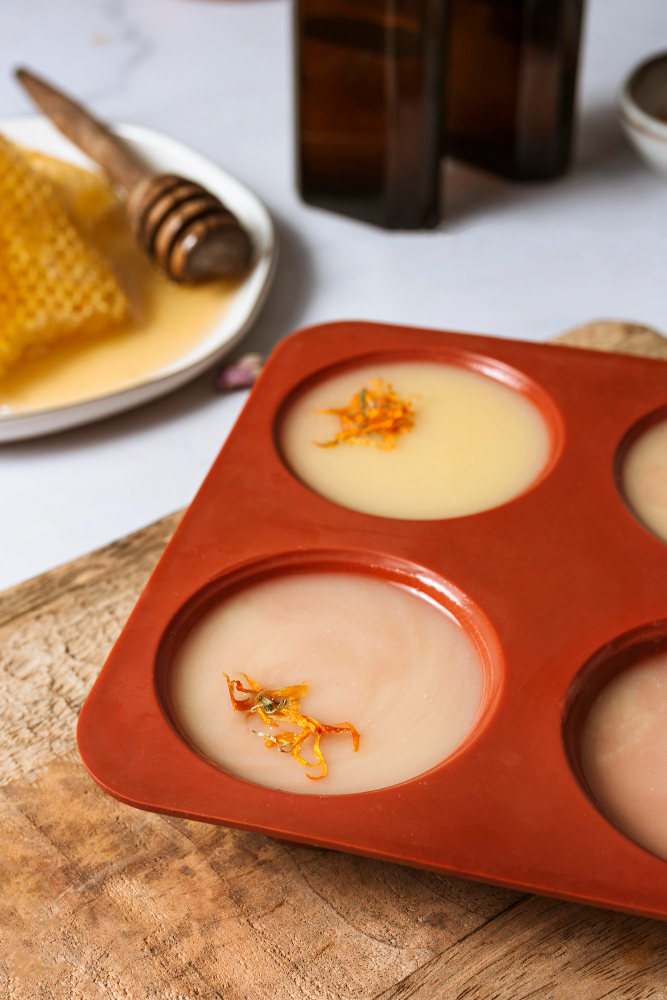
Creamed Honey vs. Liquid Honey: Key Differences
Both types are 100% pure honey, but they differ in a few ways. Here’s a quick comparison:
- Texture: Creamed honey is thick and spreadable; liquid honey is runny and pourable.
- Crystallization: Creamed honey has controlled, fine crystals; liquid honey may form coarse crystals over time.
- Ease of Use: Creamed honey is mess-free for spreading; liquid honey is ideal for mixing or drizzling.
- Shelf Life: Both last forever, but creamed honey stays creamy, while liquid honey may harden.
- Processing: Creamed honey requires extra stirring; liquid honey is minimally processed.
Understanding these differences helps you pick the right honey for your needs.
Texture: Creamed vs. Liquid Honey
Creamed Honey Texture
Creamed honey feels like soft butter or peanut butter. It’s thick but smooth, making it easy to scoop or spread. The tiny crystals give it a luxurious, velvety mouthfeel. It doesn’t drip, so it’s perfect for toast or bagels without a sticky mess.
I love how creamed honey stays put on my morning muffin—no spills, just pure sweetness!
Liquid Honey Texture
Liquid honey is fluid and flows easily. It can be clear like glass or slightly cloudy if raw. Its runny nature makes it great for pouring into tea or over pancakes. However, it can be sticky and messy if you’re not careful.
When I drizzle liquid honey on yogurt, it creates beautiful swirls but sometimes gets everywhere!
Taste: Creamed vs. Liquid Honey
Creamed Honey Taste
Creamed honey tastes just like liquid honey, but its texture can affect perception. The smooth, creamy feel makes it seem richer or milder. Flavors depend on the honey’s source, like clover (mild) or buckwheat (bold). Some brands add natural flavors, like cinnamon or vanilla, for extra fun.
My favorite is cinnamon creamed honey—it’s like a warm hug in every bite.
Liquid Honey Taste
Liquid honey’s taste is bold and direct. Without the creamy texture, its sweetness hits your taste buds faster. It ranges from light and floral (like acacia) to deep and earthy (like manuka). Raw liquid honey often has more complex, natural notes due to pollen and enzymes.
I love wildflower liquid honey in my tea—it’s sweet with a hint of flowers.
Uses: Creamed vs. Liquid Honey
Both honeys are versatile, but their textures make them suited for different tasks. Here’s how they shine.
Uses for Creamed Honey
Creamed honey is a spreadable superstar. Its thick texture makes it ideal for:
- Spreads: Slather on bread, crackers, or scones for a mess-free treat.
- Snacks: Pair with cheese, apples, or nuts for a quick appetizer.
- Baking: Add to cookies or cakes for a creamy, sweet touch.
- Gifts: Package in jars for a thoughtful, homemade present.
I spread creamed honey on warm cornbread—it’s cozy and stays perfectly in place.
Uses for Liquid Honey
Liquid honey’s runny nature makes it perfect for pouring or mixing. Try it for:
- Drinks: Stir into tea, coffee, or smoothies for natural sweetness.
- Cooking: Drizzle over roasted veggies or use as a glaze for meats.
- Dressings: Mix into salad dressings or marinades for a sweet kick.
- Skincare: Use in DIY face masks for hydration and antibacterial benefits.
I drizzle liquid honey over my oatmeal—it blends in beautifully and adds just the right sweetness.
Quick Comparison of Uses
- Breakfast: Creamed for toast; liquid for yogurt or porridge.
- Baking: Creamed for frostings; liquid for batters or glazes.
- Drinks: Liquid for easy mixing; creamed for a richer texture in hot drinks.
- Snacks: Creamed for spreads; liquid for dipping or drizzling.
Which Is Healthier?
Both creamed and liquid honey are healthy when raw and unprocessed. They’re packed with:
- Antioxidants: Fight free radicals and support overall health.
- Antibacterial Properties: Help with sore throats or minor wounds.
- Natural Sugars: Provide quick energy without processed additives.
The only difference is processing. Creamed honey is stirred to create its texture, but this doesn’t affect its nutrients if done properly. Choose raw, unpasteurized versions of either for maximum benefits.
I keep both in my pantry—creamed for snacks, liquid for tea. They’re both great for a natural energy boost!
Where to Buy Creamed and Liquid Honey
Want to try both? Here are top online stores for 2025:
For Creamed Honey
- Savannah Bee Company (savannahbee.com): Premium whipped honey in flavors like cinnamon. Great for gifting.
- Crystal’s Honey (crystalsrawhoney.com): Affordable creamed honey with free shipping on select orders.
- The Honey Jar (thehoneyjarhome.com): Budget-friendly creamed honey from Utah farms.
For Liquid Honey
- GloryBee (glorybee.com): Organic liquid honey in bulk, like clover or wildflower.
- Zach & Zoe Sweet Bee Farm (zachandzoe.co): Small-batch, raw liquid honey with rich flavors.
- Bee Raw (beeraw.com): Artisanal, single-origin liquid honey from U.S. farms.
Check labels for “raw” and “unfiltered” to ensure quality.
How to Store Creamed and Liquid Honey
Both types last forever with proper care. Follow these tips:
- Airtight Containers: Use glass jars to keep out moisture.
- Cool, Dry Place: Store at room temperature (60–70°F) away from heat or sunlight.
- No Fridge: Cold temps can harden creamed honey or cause liquid honey to crystallize faster.
- Clean Utensils: Use dry spoons to avoid contamination.
I keep a jar of each on my counter—they’re always ready for a quick snack or recipe!
Which Should You Choose?
It depends on your needs:
- Choose Creamed Honey If: You want a mess-free spread for toast, snacks, or baking. It’s great for kids or gifting.
- Choose Liquid Honey If: You need a versatile sweetener for drinks, cooking, or skincare. It’s ideal for pouring or mixing.
- Try Both If: You love variety! Use creamed for breakfast, liquid for cooking.
I switch between them depending on the day—creamed for my bagel, liquid for my evening tea.
Final Thoughts
Creamed honey and liquid honey are two sides of the same sweet coin.
Creamed honey’s smooth, spreadable texture is perfect for snacks and spreads.
Liquid honey’s runny nature shines in drinks and cooking. Both are healthy, natural, and delicious when raw. Try brands like Savannah Bee or GloryBee to explore their unique flavors.
Ready to stock your pantry?
Grab a jar of each and experiment. Have a favorite honey type or recipe?
Share it in the comments—I’d love to hear your sweet ideas!
For more information, visit , https://besthoneytobuy.com/

